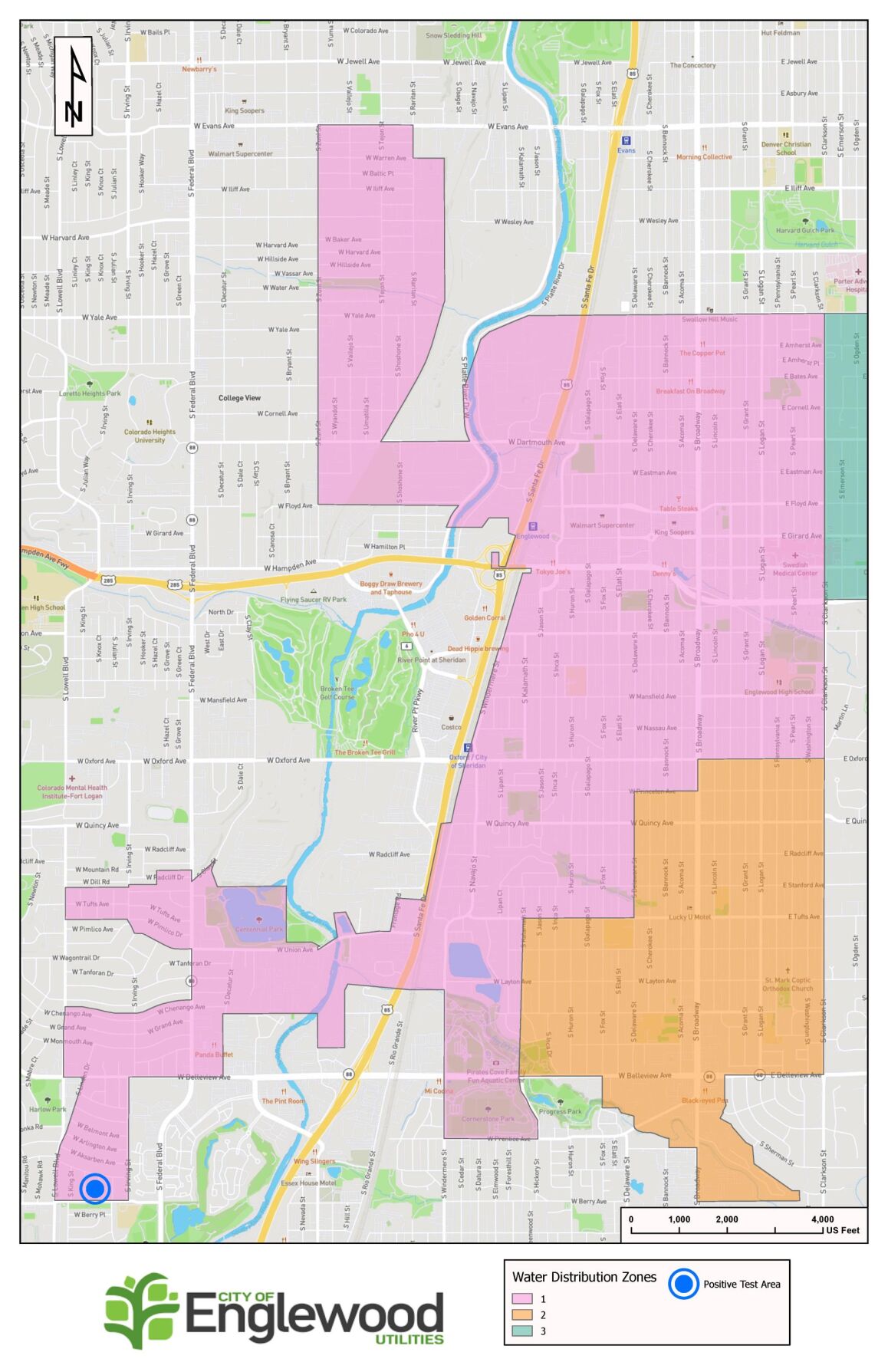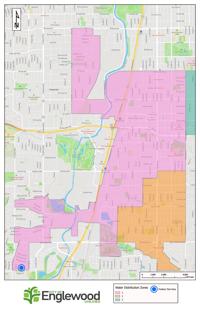Boil advisory lifted in Englewood
The city of Englewood lifted a boil advisory Friday afternoon that had impacted over 25,000 customers since Wednesday.
Boil advisory issued in Englewood after E. coli bacteria found
Although the tap water in Zone 1 — the largest in the city’s water system — is safe to drink, residents should throw out ice and flush faucets and other appliances “to ensure removal of potentially contaminated water,” the city said.

Englewood residents who live within the pink area were placed under a boil advisory Wednesday afternoon
Courtesy of the City of Englewood

Englewood residents who live within the pink area were placed under a boil advisory Wednesday afternoon
The city worked in coordination with the Colorado Department of Public Health and Environment and the Tri-County Health Department to ensure residents had safe drinking water. The cause of the E. coli contamination that led to the boil order is still unknown, officials said.
“Based on the facts, i.e. one positive test result among so many negative results, the city took the proper steps and conducted the public notice at the right time,” said Ron Falco, safe drinking water program manager for the state health department.
Investigation into emergency alert 'glitch' underway
Test samples from one of the city’s water systems tested positive for E. coli on Tuesday, but since only one sample was positive, the city retested the water systems as “single false-positive test results do occur.” On Wednesday, the results from the re-tests came back and that’s when the advisory was issued.
The city has given several recommendations to residential properties and businesses, hospitals and other facilities on what to do now that the advisory has been lifted:
Residential:
- Flush the plumbing in your home by running all cold water faucets for at least five minutes each. Begin with the lowest faucet in your home or business and then open the other faucets one at a time, moving from your lowest floor to your highest. After five minutes, turn off your faucets in reverse order, from highest to lowest.
- Flush all appliances connected to the water line, like refrigerators and dishwashers.
- Disposable filters that have come in contact with contaminated water should be removed and replaced.
- Ice from ice makers should be dumped and replaces three times. Ice maker containers should be wiped clean with a solution of two tablespoons bleach to one gallon of water.
Businesses, Hospitals, Health Care Facilities & Nursing Homes:
- Make sure equipment with water line connections are flushed, cleaned and sanitized according to manufacturers’ instructions.
- Managers of large buildings with water-holding reservoirs should consult with their facility engineer and health department about draining the reservoir.
- Flush pipes and faucets. Run cold water faucets continuously for at least five minutes.
- Flush drinking fountains. Run water continuously for at least five minutes.
- Run water softeners through a regeneration cycle.
- Drain and refill hot water heaters set below 113 degrees Fahrenheit
- Change all point-of-entry and point-of-use water filters, including those associated with equipment that uses water.
- Resume usual bathing practices and care for patients with breaks in skin.
Anyone with questions regarding the advisory or what to do can call the city at 303-762-2365.





